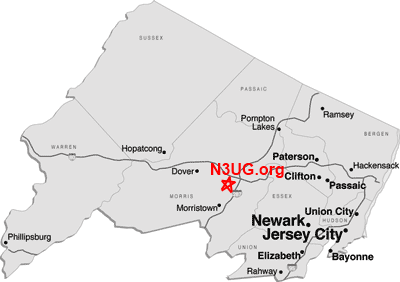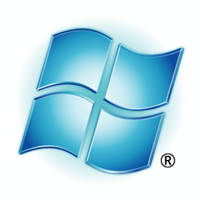Windows Azure Behind The Scenes @N3UG
 Last Tuesday I had the privilege of speaking at the Northern New Jersey .NET user group (aka “N3UG.org”). It was a great time talking to folks here in Jersey about the Windows Azure platform. Thanks to everyone who attended and participated in a lively discussion!
Last Tuesday I had the privilege of speaking at the Northern New Jersey .NET user group (aka “N3UG.org”). It was a great time talking to folks here in Jersey about the Windows Azure platform. Thanks to everyone who attended and participated in a lively discussion!
When I speak at a user group or tech conference, sometimes the audience is shy and doesn’t ask many questions.
Some times, they don’t ask ANY questions.
When that happens, I really can’t get a sense of whether I did a bad job, the content I covered was not relevant, or I’m just in a room of really really smart people who understood everything I said perfectly the first time I said it without need for clarification.
That was NOT the case last Tuesday in Parsippany. Normally, most user group talks last 90 minutes or so. But last week, we started at 6:30pm, and by time the last questions were being asked, it was past 10pm! Lots of questions and great discussion points… which showed me that folks genuinely were interested in learning more about the platform.
 I like to think I know a lot, but as the saying goes, “the more you know, the more you know nothing.” Naturally, when I get a lot of questions during a user group presentation, there are going to be some I don’t know the answers to offhand. This meeting was no exception.
I like to think I know a lot, but as the saying goes, “the more you know, the more you know nothing.” Naturally, when I get a lot of questions during a user group presentation, there are going to be some I don’t know the answers to offhand. This meeting was no exception.
There were a lot of questions about how the Windows Azure infrastructure works behind the scenes, specifically with regards to management of the VMs that applications run in, and SQL Azure. A lot of these I think I handled, but others, I referred to the experts.
One thing I frequently mention in my Azure talks, but rarely reference, are some of the great “behind the scenes” Windows Azure webcasts available on MSDN’s Channel 9. Now it’s time to provide the references.
Here are some videos that I want to share with you that provide some in-depth information on how Azure runs behind the scenes. This information can help you understand how the cloud works, and how to design your applications to run better there.
MUST SEE Windows Azure Videos!
First up, a two-part talk from Mark Russinovich that was delivered at the //Build conference in Anaheim, California in September 2011. Part 2 is the video I think most here will be interested in. Part 1 is mostly the same information and content I presented at the N3UG meeting. If you were there, or have seen a Windows Azure overview talk before, you can skip it. I’m including it as a reference for those who are reading this post and could use a good overview.
Note: If you were at the N3UG meeting and want a reference to my slides, see the content posted from our recent Azure Dev Camp series in December 2011 (I pulled mostly from that.)
In the second video, Mark covers in-depth how the Windows Azure Fabric controller works and how the data center manages the infrastructure that runs your applications in the Azure datacenter. This should detail the answers to a whole slew of questions folks had Tuesday night at the N3UG meeting.
Part 1 – Introduction to Windows Azure: the cloud operating system
Part 2 – Inside Windows Azure: the cloud operating system
The next two videos I want to share are regarding SQL Azure. During my overview talk, I covered how SQL Azure is “database as a service”. It is a multi-tenant service that is run in the Azure datacenters on commodity hardware. That spawned a lot of questions regarding performance, latency, competition with other tenants, etc.
Here are two great videos from TechEd 2011 in Atlanta, GA that go in depth on SQL Azure performance and also how you can use federations to achieve scale in the cloud.
The first video is delivered by Henry Zhang. Henry’s talk is an updated version of one delivered by David Robinson at TechEd Australia in 2010. In this talk, Henry goes deep on how SQL Azure is implemented under the covers, providing you a better understanding of how the system works. He covers life in a mutli-tenant environment, including throttling, and how to design your databases for it.
Microsoft SQL Azure Performance Considerations and Troubleshooting – Henry Zhang
The second video is delivered by Chihan Biyikoglu. Chihan explains what a database federation is, and how they work in SQL Azure.
Building Scalable Database Solutions Using Microsoft SQL Azure Database Federations – Chihan Biyikoglu
Note: This talk is from May 2011 when SQL Azure Federations were only available as a preview/beta. The SQL Azure Federations feature was officially released into production in December 2011. So there may be variances between the May video and current service feature. He released a short updated video here.
As always, if you have questions about Windows Azure. Don’t be shy! Leave a comment here on this post, or contact me through my blog. Go ahead and kick the tires on Windows Azure for 90-days for free! Also, don’t forget that if you have an MSDN Subscription, you have access to a ‘free’ Azure account for the duration of your subscription ! Don’t let that MSDN Azure account go to waste, activate it now!